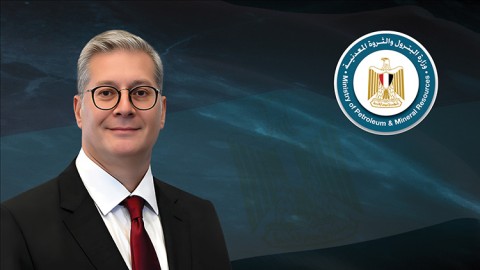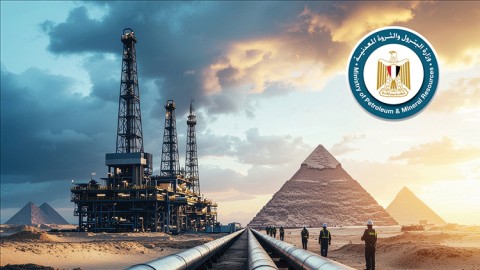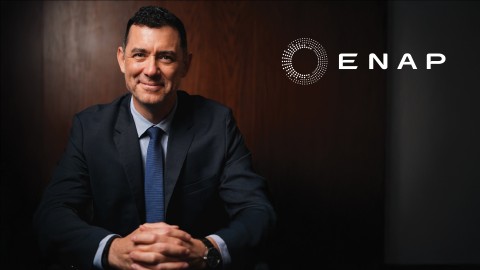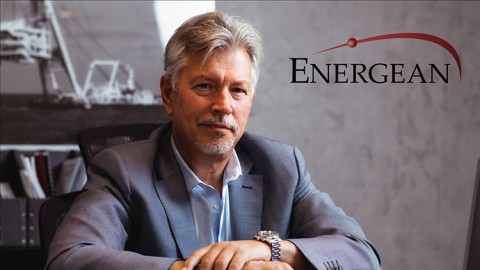At COP 27, the eyes of the world will turn to Egypt as His Excellency President El Sisi hosts global leaders and identifies the next steps in the fight against climate change. Egypt is already delivering actions to decarbonize and shape the energy systems of the future. Within this drive, Bapetco is rapidly establishing itself as a leader in the sector by identifying and implementing techniques to reduce emissions through optimization, application of proven technology, and commercial structures. Bapetco and its partners are supporting the Ministry of Petroleum’s vision led by His Excellency Tarek El-Molla, with many actions already underway and exciting plans for the future.
Committed to Lower Carbon Energy & Shared Benefit
Bapetco and its partners Cheiron and Capricorn Energy are fully committed to delivering actions to support Egypt’s implementation of the UN’s Sustainable Development Goals as part of Egypt’s 2030 Vision and national ambitions for access to affordable energy, providing decent work opportunities and economic growth and reducing inequalities. Our activities seek to support the transition to a lower carbon economy over the long term whilst meeting the necessities of today. We understand our role in supporting the sector’s carbon mitigation plans under Egypt’s recently updated Nationally Determined Contribution as well as its Long Term Low Emission Development and Climate Change Strategies.
Establishing a Decarbonization Pathway
Bapetco and its partners have a clear decarbonization action pathway, setting out emission reduction activities over a short and longer-term time horizon. Guided by defined principles to avoid, reduce, substitute, sequester, and then offset, we are actively reducing greenhouse gas emissions (GHGs) across our operations, with a short-term target of a 23% reduction in GHG emissions by the end of 2024, against a monthly GHG emissions baseline in December 2019 of approximately 120 kilo tonnes of carbon dioxide equivalent (CO2e). A new baseline emissions study is underway.
The pathway we are following includes actions already underway (in plan) and actions under study to evaluate optimal implementation. The pathway also considers tackling residual emissions through natural ecosystem offsets through either our own schemes or those of others. We describe the exciting opportunities ahead next and the potential for international financing mechanisms to support them.
Actions Underway
We are improving our operations through diesel substitution, electrification, energy efficiency improvements, and our emissions reduction program and commitment to the World Bank’s Zero Routine flaring by 2030 initiative. Flaring accounts for 15% of our emissions total with flare gas to power projects planned in a variety of locations; capturing a valuable resource that is otherwise lost, supporting cost savings whilst removing harmful emissions – a significant double benefit. They are part of a wider program to replace diesel with gas and electrify our operations through centralized power and distribution networks. Already, 35 generators were removed from the field between November 2021 and June 2022 alone, and a total reduction in emissions of 50 kilotonnes CO2e due to diesel substitution and fuel savings is anticipated in the 22/23 financial year. Such networks will also allow future renewable energy integration including solar power and potential tie-ins with sister companies for larger-scale investments.
The Importance of Reducing Methane Emissions
Reducing methane emissions is a key objective globally in reducing GHG emissions in the near term, due to the highly potent warming impact of this greenhouse gas. A fugitive emission identification and control program to eliminate potential leaks of natural gas containing methane is being rolled out, along with the elimination of vented untreated natural gas. Various methodologies are to be deployed, including satellite mapping and cameras that identify otherwise invisible releases.
Looking to the Future; our Medium to Long Term Plans
We have started a major study in our core production fields that will evaluate the feasibility of capturing CO2 from high-content gas streams for reinjection into depleted reservoirs. We are also undertaking engineering design to recover waste heat from power turbines in our Obaiyed field in the Western Desert that can then be used to reduce fuel consumption in hot oil heaters. Further optimizations are planned across all fields to understand how we can use existing equipment more efficiently. Hydrogen is a future fuel the sector is evaluating and for any residual emissions that cannot be eliminated now, initial research is being undertaken to identify how we can use natural ecosystems to capture carbon or create biofuel.
Furthermore, Bapetco’s partner Capricorn is exploring the potential for carbon credit schemes to provide funding to help unlock investment in additional low-carbon, and carbon-reducing technologies.
Collaboration is Vital
Our workforce is our greatest asset and together, the Bapetco team will evaluate future opportunities to continue our reduction journey. More than 40 areas of opportunity have been mapped to date with more to come. They will secure our success in collaboration with EGPC, the Ministry, other JV partners, and third-party operators who may use our infrastructure, now or in the future, to process their oil and gas. Reaching alignment on the best GHG emission-reducing strategies with these various stakeholders will be key to reducing GHG emissions even further in the Bapetco facilities and infrastructure.
The role of decarbonized oil and gas in energy systems will continue and we have the ideas, commitment, and expertise to support Egypt’s needs as the energy mix evolves and we contribute to helping Egypt meet its energy requirements in a responsible and sustainable way.








